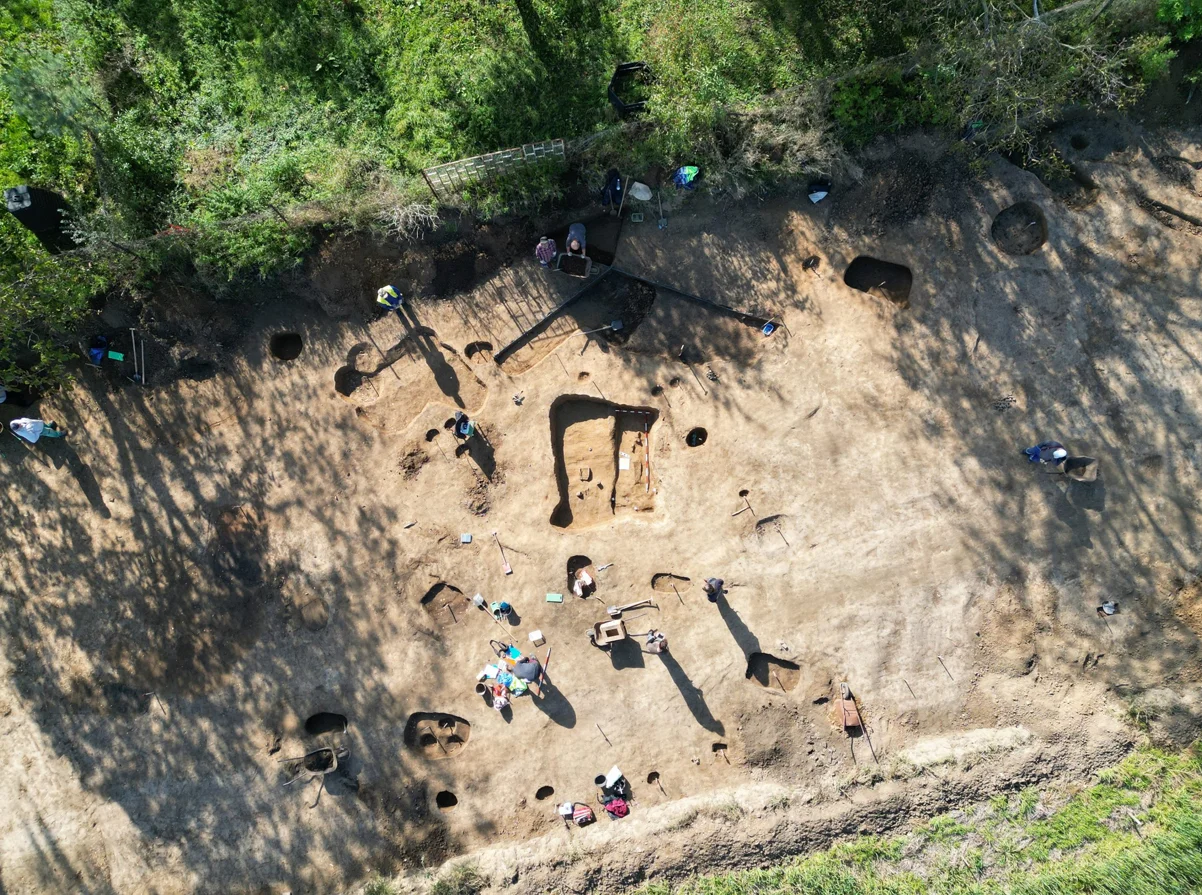Archaeologists from the Olomouc Archaeological Centre have made several significant discoveries at Dluhonice, located in the Olomouc region of Czechia.
The discoveries include an extensive Celtic cremation cemetery from the 3rd to 2nd centuries BC, Slavic graves from the 9th to 10th century AD, and traces of a Late Stone Age settlement dating to approximately 5000 BC.
The Celtic cremation cemetery dates to the La Tène cultural period and contains 33 cremation burials – the largest concentration from this era discovered in Central Moravia. This site is particularly unique, as similar burial grounds in the region typically feature skeletal remains rather than cremations.
The most prominent burial is that of a warrior, interred with funerary grave goods such as an iron sword and a spear, signifying his elite status. Analysis of the sword reveals that it was stored in a leather scabbard and originally featured a wooden handle.
Other graves in the cemetery had traces of small skeletal fragments left from the cremation process, and objects such as ceramic vessels, bronze buckles, and iron tools.
The excavation also revealed burials from the 9th to 10th centuries AD during the Great Moravian Empire. These burials followed traditional Christian customs, with bodies oriented westward and laid with extended lower limbs.
A notable find was a double grave and the burial of a woman placed on a wooden bier (a stand) who was accompanied with a ceramic vessel, a chisel set, and an iron sickle with a wooden handle.
The earliest layer of the site belongs to the Late Stone Age and is associated with the first farming cultures. Archaeologists identified structures such as longhouses, storage pits, and kilns, where over 300 artefacts were uncovered, including ceramic shards, flint tools, and stone mills.
Header Image Credit : Olomouc Archaeological Centre
Sources : Olomouc Archaeological Centre





